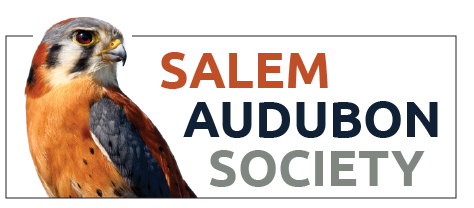
Education
Salem Audubon's education offerings include: Traveling Education Programs that focus on elementary school classrooms, short courses for Beginning Birders, and a series of 2-Hour Sessions focused on particular bird groups.
The Traveling Education Programs can be tailored to fit any age group and are available to various audiences, including public libraries, civic groups, retirement homes, and service organizations.
Thanks to Marion Soil and Water Conservation District and their generous support, the Traveling Education Programs can be free to schools and school-affiliated groups if a Traveling Program Scholarship Application form is submitted.
Other groups will be charged $45 per program. In addition, any Group doing the Build a Nest Box program will be charged $10 per nest box to cover the cost of materials.
To apply for your program free, CLICK HERE to download a Traveling Program Scholarship application form.
Traveling Education Programs
These programs provide students with real-world examples and are designed to comply with many of the Next Generation Science Standards.
To schedule a program, email Mary Ritter, Education Coordinator, marycr1@outlook.com.
Birds in Hand
How do birds differ from us? Students answer this question by examining bird specimens, feathers, wings, and nests. Discussion focuses on the mechanics of flight, bird anatomy, and basic bird identification. Programs can be adjusted to all grade levels, and students will learn to use field guides.
Bird Identification –
Classroom Introduction
Birds have very distinctive characteristics – if you know what to look for. Students will learn about plumage, flight, behavior, and habitat through a PowerPoint presentation. In addition, the class includes an introduction to field guides and has a related art activity. This program is suitable for grades 2-5.
Build a Nest Box
Many birds build nests inside the natural cavities that are disappearing as we continue to develop the land. A well-constructed nest box provides birds with a safe place to raise their young. By assembling a wooden nest box, students learn about cavity-nesting birds and invasive species, and how to place, monitor, and maintain the box. The class size for this program is limited to 30 students unless approved in advance by the presenter. An additional fee of $10 per nest box will be charged to cover the cost of materials. Students will take home their completed nest box.
Owls
Owls were called "cats of the skies" by our ancestors. Unique feather, eye, and ear adaptations make owls highly successful hunters. Students get a firsthand look at these fascinating features by examining owl feathers, wings, talons, and preserved specimens. In addition, owl identification slides and recordings of owl calls are presented, as well as opportunities to dissect owl pellets.
Bats
Bats have suffered from superstition and persecution since ancient times. This class introduces students to bats in general and Oregon bats in particular through slides and video excerpts. Students will see graphically how bats have the same basic anatomy as humans but with some dramatic modification.
Beavers
Beavers are famous for the speed and thoroughness with which they alter their environments. See how they construct dams, lodges, and even canals in the quest for building materials and food. Learn about the extended families and how they leave their parents at two years of age and go on hazardous journeys to find and develop their own home sites. This program uses high-quality videos, poster boards, skulls, chewed branches, and a pelt.
